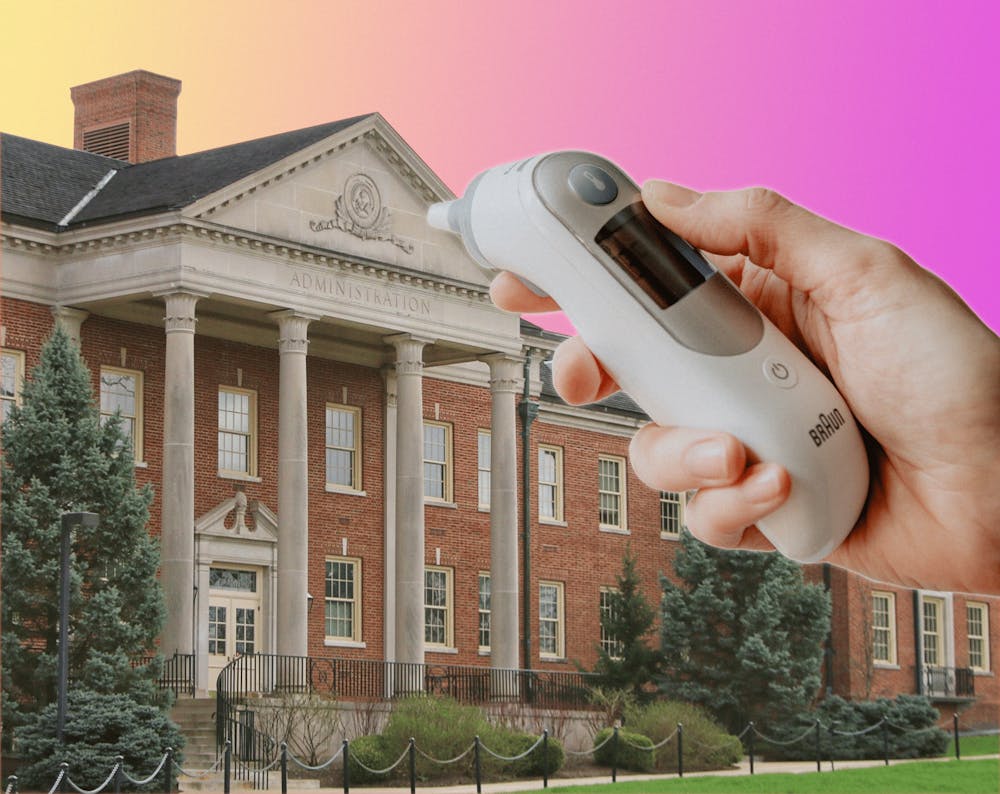One month after Miami students moved onto campus in September, the process of dealing with COVID-19 remains uncomfortable and unfamiliar, and for many, it hasn’t gotten any easier.
On-campus students have reported waiting up to two days to be contacted by the university and moved into isolation after finding out they have tested positive for COVID-19, leaving them unsure of how to proceed in the time left between.
First-year Sanika Marwah and her roommate were moved into isolation at the Miami Inn on Oct. 12 after Marwah had been notified of her positive result on Oct. 11 and her roommate the day before.
Both were notified in emails instructing them to log into a patient portal for their results, and they initiated phone contact with the university themselves.
“No one gave us any phone call or any information about our results until my roommate actually called the school,” Marwah said.
They spent the following days self-isolating in their room and trying to avoid others in the bathroom.
“They didn’t tell us what to do, so we tried to just eat ramen and stuff in our rooms,” Marwah said. “But then we went to the dining hall one time and we wore two masks, and we just grabbed our food and left as fast as we could.”
First-years Jackie Cameron and Kate Reagan were among the first to experience this isolation limbo shortly after moving into their dorms.
Cameron was first tested on Sept. 21, then again on Sept. 25 after complications. She was confirmed positive the same day and moved into isolation on Sept. 26, spending five days with symptoms outside of isolation.
Reagan learned she was positive Sept. 22 and waited two days to move into the Inn on Sept. 24.
The two report self-isolating under the same fears that Marwah expressed – not wanting to infect anyone in a dining hall or bathroom.
“I stayed in my room, and then the only time I ate was through contactless delivery,” Reagan said.
Enjoy what you're reading?
Signup for our newsletter
Cameron said she also avoided eating anything besides contactless delivery, waiting in her room to order dinner from Oxford To You and instructing that the food be left outside.
This in-between period does not happen every time, though.
First-years Enrique Robles, who was in isolation at the Miami Inn until Oct. 14, and Sarah May, isolated until Sept. 16, both said they were quickly moved from their dorms into isolation within a few hours of receiving their results.
But even this short, same-day time frame can prove stressful for some students.
For first-year Alex Fink, isolation couldn’t come fast enough. Fink had moved to the house of an off-campus friend once her residence hall was designated as a Level 4 “purple” hall under the university’s COVID-19 dashboard.
Though looking to avoid the virus, she still caught it and spent two days lying sick on her friend’s couch before she learned in an email that she had tested positive.
Looking to do anything to have a more comfortable place to stay, Fink filled out the student-self reporting form, hoping it would somehow accelerate her transition to an isolation room.
“That just felt so appealing because I was feeling so terrible,” Fink said. “Once I had it, I was just like, ‘I want to be there and sleeping.’”
Her wish was granted 10 minutes later by a phone call from a representative from the Office of the Dean of Students, who told her they were ready to move her to the Miami Inn immediately.
Gabby Dralle, associate dean of students, explained that the self-reporting form is the key to quick isolation for positive students because it cuts through the web of precautions the university has in place to fight the pandemic.
Miami has employed the help of TriHealth to facilitate its extensive testing, and the Butler County General Health District (BCGHD) is responsible for students under quarantine and isolation. Miami’s own Office of the Dean of Students is tasked with communicating with students who have been identified as positive and moving them into isolation or quarantine.
Communication between all of these entities can be slow, and even if a student has a confirmed case of COVID-19, they will not be contacted to isolate until the dean’s office learns of it from TriHealth, Student Health Services or BCGHD and puts it on their call queue, Dralle said.
The student self-reporting form puts a case directly onto that queue, reducing the time a student waits for communication.
“There’s been a lot of changes from when we started this back in August,” Dralle said of the efforts to communicate with students.
She stressed the importance of self reporting as the greatest way to help expedite the process.
Dralle, who is used to working on Title IX violations at Miami, now works mostly on COVID-19 communication tasks that have taken over the office.
“It’s completely changed our office,” she said, “and you know, we never expected to be public health professionals.”




